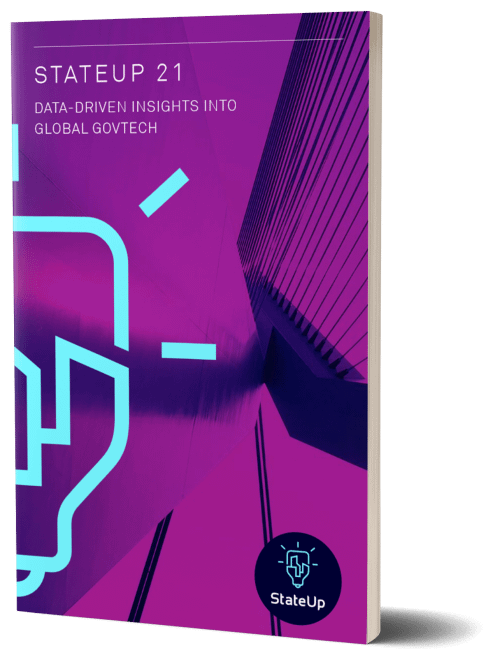Public-Purpose Technology Intelligence
Summary
This information is accurate as of January 2021. For more up-to-date information, access Nebula, our Public-Purpose Tech intelligence platform. Join with our Nebula Community Membership, or upgrade to a Nebula Pro Membership.
- Founded in 2018
- Total funding £11.9 million
- Latest funding round: Series A, £11.6 million
- Lead investors include Northzone, Oxford Foundry
- Office: London, UK (HQ); New York, US; Tallinn, Estonia
- FTEs: 11-50
- Key clients/partners: NHS, JLL, ABM Industries, Trail. Infogrid’s partners, Disruptive Technologies, Airthings and BEA provide its sensors.
- Key executives: William Cowell de Gruchy, CEO and Founder, previously Consultant, Drystone Strategy Partners; Bernhard Wenzel, Chief Architect, previously Owner Bernhard Wenzel Consulting
Profile
Emissions from energy used to cool, heat and light buildings contribute to 28 percent of global carbon emissions. With the global urban population projected to hit 6 billion by 2045, it is important to systematically reduce these emissions. Infogrid combines third-party sensors and proprietary algorithms in a solution that digitalizes facility management–delivering benefits of automated and remote monitoring, including reducing the carbon footprint. Public sector building and construction contracts have a significant role to play in reducing building-related emissions; Infogrid is tapping into this opportunity.
Infogrid has a striking focus on modularity. The Infogrid platform summarizes data from sensors, can create automated alerts, and enables one-click data sharing and report generation. The platform is hardware agnostic and currently integrates with three sensor providers, all of which prioritize ease of installation. One partner, Disruptive Technologies, manufactures sensors that are wireless and small (20x20x2mm) with a backside sticker. Installation involves simply sticking the sensors on the desired surface and can take minutes. Sensors send data to cloud connectors via radio frequencies; cloud connectors transmit to the cloud via cellular networks. Each partner supports a different range of applications (with some overlap), enabling Infogrid to work across virtually all use cases–from temperature and humidity monitoring to counting people.
A strengthened policy focus on zero-emissions and the circular economy make Infogrid’s product timely. For example, the European Union’s building renovation wave aims for 35 million building renovations by 2030. It prioritizes funding energy efficient renovations, and will usher in binding energy performance standards for all EU buildings in 2021. As with many startups in StateUp 21, the coronavirus outbreak has helped Infogrid’s prospects, in this case by incentivizing remote monitoring.
Plans
- Fresh off its Series A funding, Infogrid is hiring across a number of key business functions
- It is looking to expand its pro bono temperature monitoring across the NHS
Who Should Speak To This Company
Facility Managers, NHS Trusts, Sensor Manufacturers
Company In Action
Manual checks of cold storage medicines are often inadequate. Details can be missed via low frequency data collection or human error. Thus, manual checks can both detract from the time available for patient care and the quality of dispensed medication. To remedy this, some NHS trusts have turned to Infogrid’s cold monitoring solution. Over a hundred NHS sites have installed Disruptive Technologies’ sensors on pharmacy refrigerators and freezers and begun automated temperature monitoring via Infogrid’s platform. Infogrid claims that participating NHS trusts have improved patient care and gotten a positive ROI in less than three months. Participating NHS trusts are also looking to expand into other functionalities that Infogrid and Disruptive Technologies’ product can provide, such as monitoring patient well-being and fire safety.
StateUp View
Smart buildings have promise, but uptake has underwhelmed. Infogrid directly addresses key barriers to smart building traction. Players are often put off by the complexity of smart building products; Infogrid’s sensors are easily installed and its platform automates alerts and reporting. Installation and replacement are costly, but Disruptive Technologies’ sensors last up to 15 years, and Infogrid claims its solution pays for itself within 5 months. There is no standard protocol for smart device communication; Infogrid’s platform being hardware agnostic should ease this pain point. Finally, end-to-end encryption should allay concerns about cybersecurity breaches.
Infogrid is primarily an analytics company, and for analytics players, data is king. More data fine tunes Infogrid’s proprietary algorithms, helping to deliver more powerful insights. Infogrid has made positive strides in expanding its data sources rapidly. Partnering with hardware manufacturers provides exposure to their existing client base; offering its cold storage services pro bono to NHS trusts should ease getting trusts on board.
Infogrid could build resilience by hedging against supplier disruption as it grows. Relying on hardware suppliers may also reduce Infogrid’s pricing power. As an alternative, over time it could rapidly increase partners, pursue backwards integration or mix both–ease in its own sensors (perhaps by acquiring a supplier) while maintaining compatibility with a wide range of partners.

Get Access To The Full Report
- Discover data-driven insights into key GovTech subsectors and technologies
- Learn how investment into GovTech is changing
- Read the full StateUp 21 member profiles



